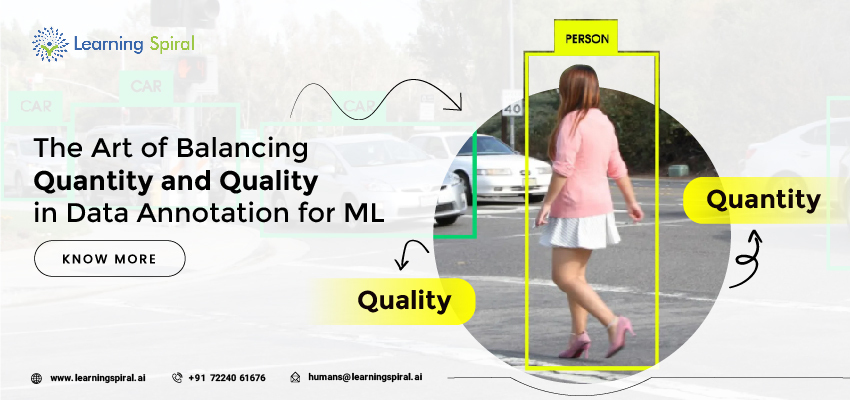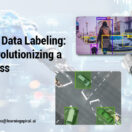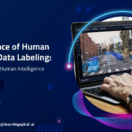In the age of machine learning, data reigns supreme. But not just any data; high-quality, accurately labeled data is necessary for effective ML models. However, striking the right balance between the quantity of data and its quality can be a difficult feat, especially when juggling resource constraints and project deadlines.
This article delves into the art of balancing quantity and quality in data annotation for ML, offering insights on optimizing your approach and reaping the benefits of both worlds.
The Quantity Dilemma:
More data often translates to better model performance. It provides greater context and variability, allowing the model to learn complex relationships and nuances. However, acquiring and annotating large datasets can be time-consuming and expensive.
Dissecting the accurate data amid a mountain of resources and text can be a burden. Hiring human annotators, for instance, requires careful selection, training, and quality control measures, adding considerable cost to the equation.

The Quality Trouble:
Even a massive dataset of poorly labeled data can be detrimental to your model’s performance. Inaccurate labels introduce bias and confusion, leading to unreliable predictions and hindering the model’s ability to generalize.
Therefore, focusing solely on quantity without prioritizing quality can be a recipe for disaster. Finding only accurate and reliable resources for even the smallest of information is crucial.
Finding the Sweet Spot:
So, how do you reconcile these competing demands? Here are some strategies to navigate the delicate balance between quantity and quality in data annotation:
1. Prioritize Accuracy over Volume:
It’s often more beneficial to have a smaller, meticulously annotated dataset than a larger one filled with errors. Invest in robust quality control processes, including double-checking annotations, resolving inaccuracies, and providing ongoing feedback to annotators.
2. Harness the Power of Automation:
Leverage technology to automate repetitive and error-prone tasks. Pre-annotation tools can suggest labels based on existing data, while automated quality checks can flag potential errors.
Explore semi-supervised learning techniques to leverage unlabeled data alongside smaller amounts of labeled data for effective training.
3. Utilize Diverse Annotator Pools:
Crowdsourcing platforms can provide access to a large and diverse pool of annotators, but managing quality at scale can be challenging. Implement stringent qualification tests and provide clear annotation guidelines to ensure consistency.
Consider employing expert-in-the-loop approaches where critical or complex tasks are reserved for highly trained annotators.
4. Focus on Targeted Data Collection:
Instead of aiming for blanket data acquisition, tailor your strategy to specific model needs. Identify the data types and features that are most crucial for your model’s success and prioritize labeling efforts accordingly. This targeted approach can help you achieve optimal performance with a smaller dataset.
5. Continuously Monitor and Upgrade:
Data annotation is not a one-time process. Regularly monitor your model’s performance and identify areas where it struggles. Analyze error patterns and pinpoint weaknesses in the labeled data that might be contributing to these issues. Use this feedback to refine your annotation guidelines, re-label specific data points, and improve the overall quality of your data over time.
Striking the balance between quantity and quality in data annotation is a never-ending task. By thoughtfully applying these strategies, you can optimize your ML projects, maximize model performance, and ultimately unlock the true potential of your data.






